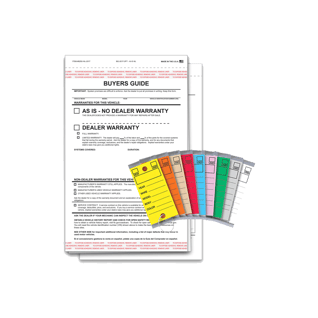
Winter Weather Preparedness Tips by Division
Preparedness for All Employees
Use these tips in your Winter Weather Preparedness plan to ensure that each division knows what they need to do to prepare for snow, ice or other winter conditions.
PARTNER SPOTLIGHT
Dealer Management System, Computer Technology, Media/Advertising, Automotive Auction, F & I/Aftermarket Products, Automotive Technology Training & Compliance
 A NHADA Gold PARTNER
A NHADA Gold PARTNERComputer Technology, Automotive Shop Equipment, Environmental Services
 A NHADA Platinum PARTNER
A NHADA Platinum PARTNERF & I/Aftermarket Products, Automotive Technology Training & Compliance, Environmental Services
.png?width=150&name=corp_logo_horz_on_light_with_trademark_symbol_1200w%20(002).png) A NHADA Diamond PARTNER
A NHADA Diamond PARTNER- Listen to weather forecast and come dressed appropriately
- Stay on well-maintained / traveled walkways; don’t try shortcuts
- Wear flat, soft soled shoes; no high heels or dress shoes
- Dry shoes prior to entering the building
- Walk, don’t run or jump and keep your hands by your side for balance
- Beware of black ice! Move slowly and use short small steps on hazardous areas
- Use railings when using stairs or walkways
- Report any falls to your supervisor
- Report any hazardous areas/conditions to facilities
- Pay attention to your path and avoid obstructions
- Avoid carrying heavy/large objects. They obstruct vision and affect balance
- Find a place to park with least amount of ice and snow and is also well lit because it will be dark at closing.
Human Resources or Safety Coordinator
Have a plan for how and with whom you will communicate when winter weather hits
Use technology to your advantage
Email and Text chain for the “Winter Weather Preparedness Team," as well as all employees
Keep all contact information updated
In addition, to having all employee contact information up to date, it is important to have contact information on hand for third party contractors including:
Utility company, Insurance providers, Landlord, Plow/Salt-Sanding contractors
Develop pre-built notifications that address each situation you’ve identified as a risk
For example: Power outages, Office closures, Unsafe driving conditions & Winter Weather Preparedness team
Monitor the Weather
Don’t assume your team or employees are following the weather. Notify employees that will be affected and provide plan of action
Timely Communication is Key
Where and how should employees expect to hear about procedures and expectations for an incoming storm?
How far in advance?
Ensure all employees are informed of winter weather expectations
Ensure proper clothing is being worn and that extra winter weather gear is on hand, in the event someone forgets their outdoor gear.
Provide slip on anti-slip gear for boots
Ensure employees are fit-for-duty on the snow removal team
Building & Maintenance
- Promptly respond to correct hazardous conditions
- Maintain good lighting in parking lots, entrances and walkways
- Provide railings for high traffic stairs and ramps
- Provide non-slip surfaces (dry carpeting and mats)
- Place salt, sand and shovels at exits and other strategic areas
- Conduct daily visual inspections of walking areas
- Promptly repair potholes and cracks on walking surfaces
- Rope off/post warning signs in areas of high risk
- Ensure that all equipment is in place prior to storm’s arrival
- Have outdoor thermometers installed and keep an eye on them to see when the temperature drops below freezing
- Be sure ice and snow is off all roofs. Block off areas where snow and ice cannot be removed and could fall unexpectedly
Sales Team
- Park all vehicles to one side of the parking lot to make it easier to plow
- Salt all entrances
- Ensure that proper clothing is being worn
- No one is allowed to push a car by hand. A power pusher or tow chains should be used to move dead vehicles
- Make sure all jump packs are fully charged and that gas cans are full
- After cars are parked and plowing is done, snow brooms are stored in one central location, gas cans are filled and stored in appropriate areas, and the jump packs are put back and recharged
- Decide which vehicles are abandoned and decide whether to dispose of or auction off. Prevent clutter in the parking lot.
- Check to make sure that vehicles have not been moved into or around plow areas or snow banks
- Work together and things will go smoother and get done quicker
- Clear snow away from doorways and garage doors for easier access


















.png?width=150&name=Ally_Final%20Logos%20and%20Pairings_11.14.2018-01%20(2).png)


-2.png?width=150&name=Wipfli%20Logo%20Blue%20RGB%20(1)-2.png)


.jpg?width=150&name=NHADA_Partner_FTR_Img_NHADA_Insurance%20(1).jpg)


.jpg?width=150&name=NHADA_Partner_FTR_Img_JMA(1).jpg)


